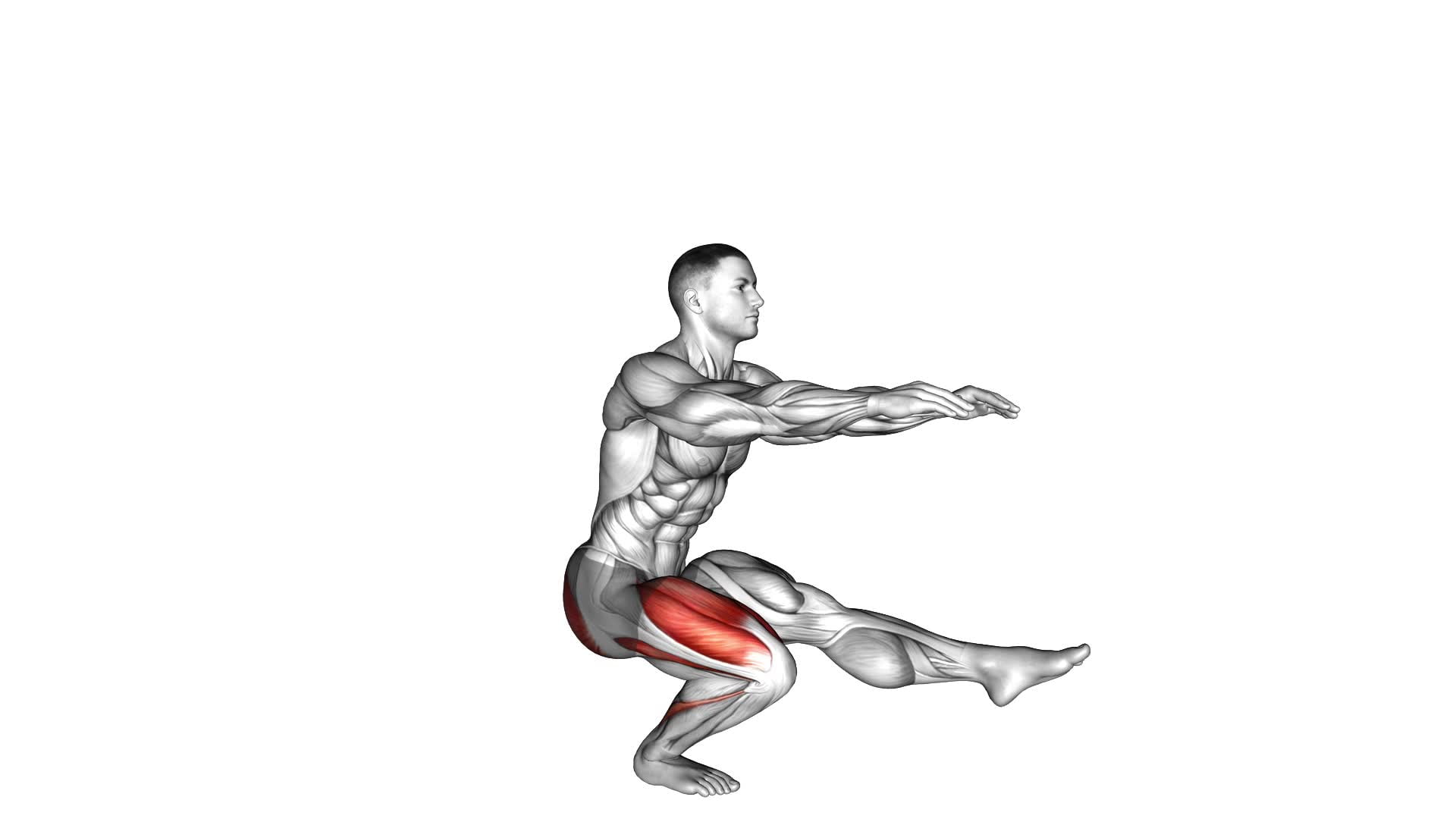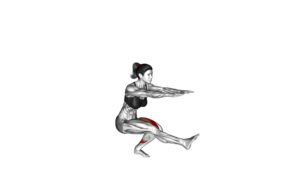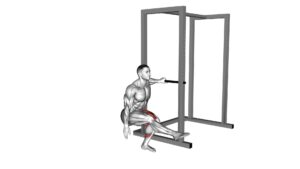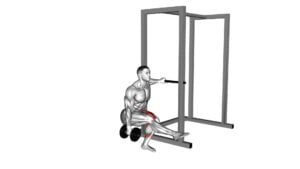Single Leg Squat (pistol) – Video Exercise Guide & Tips

Are you looking to strengthen your legs and improve your balance?
Watch This Exercise Video
The single leg squat, also known as the pistol squat, is the perfect exercise for you. In this video exercise guide, we'll walk you through the proper form and technique, as well as common mistakes to avoid.
We'll also provide modifications and progressions to help you tailor the exercise to your fitness level.
Get ready to maximize your workout and achieve amazing results with the single leg squat. Let's get started!
Key Takeaways
- Single leg squats are effective for strengthening legs and improving balance.
- Proper form and technique are crucial to prevent injuries and maximize muscle activation.
- Common mistakes to avoid include leaning too far forward and allowing the knee to collapse inward.
- Modifications and progressions can be made to increase the difficulty and intensity of single leg squats.
Benefits of Single Leg Squats
You should regularly incorporate single leg squats into your workout routine to reap the many benefits they offer. These exercises aren't only great for building strength and improving balance, but they also play a crucial role in injury prevention and muscle activation.
When you perform single leg squats, you engage your stabilizing muscles, such as your glutes, hamstrings, and core, to maintain balance and stability. This activation helps to improve your overall balance, reducing the risk of falls and injuries, especially in sports that involve quick changes in direction or uneven surfaces.
In addition to injury prevention, single leg squats also target specific muscle groups, including your quadriceps, hamstrings, and glutes. By focusing on one leg at a time, you can isolate these muscles more effectively, leading to greater strength gains and muscle development.
Moreover, single leg squats require greater control and coordination than traditional squats. This increased demand on your muscles and nervous system can enhance your overall athletic performance and functional movement patterns.
To incorporate single leg squats into your routine, start with bodyweight squats and gradually progress to weighted variations as you get stronger. Aim for 2-3 sets of 8-12 reps on each leg, 2-3 times a week, to experience the full benefits of this exercise.
Proper Form and Technique
To perform the single leg squat with proper form and technique, it's important to maintain balance and stability while engaging the necessary muscle groups. Follow these tips to ensure injury prevention and effective muscle activation:
- Start by standing tall with your feet hip-width apart.
- Lift one leg off the ground, extending it straight in front of you.
- Slowly lower your body down by bending your supporting leg, keeping your knee in line with your toes.
- As you descend, keep your core engaged and your chest lifted.
- Go as low as you can while maintaining control and balance, then push through your heel to return to the starting position.
By focusing on these key points, you won't only reduce the risk of injury but also activate the muscles in your glutes, quadriceps, and hamstrings more effectively. Proper form and technique are vital for maximizing the benefits of the single leg squat.
Now that you understand the proper form and technique, let's move on to the next section and discuss common mistakes to avoid.
Common Mistakes to Avoid
To ensure proper form and technique while performing the single leg squat, it's crucial to be aware of common mistakes that should be avoided. By knowing what not to do, you can maximize the effectiveness of this exercise and prevent injuries.
One common mistake is leaning too far forward. This not only puts excessive strain on your knees but also reduces the engagement of your glutes and hamstrings. To avoid this, focus on keeping your chest up and your weight evenly distributed throughout your foot.
Another mistake is allowing your knee to collapse inward. This can put stress on the knee joint and increase the risk of injury. To prevent this, make sure to actively engage your hip muscles and push your knee outwards as you lower into the squat.
Lastly, avoid rushing through the movement. Performing the single leg squat too quickly can compromise your form and reduce the effectiveness of the exercise. Take your time, maintain control, and focus on engaging the correct muscles.
Modifications and Progressions
To further challenge yourself and continue progressing with the single leg squat, consider implementing modifications and variations into your routine. Here are some modification variations and advanced progression techniques that you can try:
- Assisted Single Leg Squats: Use a chair or a wall for support as you perform the squat. This can help maintain balance and stability as you work on building strength and control.
- Weighted Single Leg Squats: Hold a dumbbell, kettlebell, or any other weighted object while performing the squat. This adds resistance and increases the intensity of the exercise.
- Elevated Single Leg Squats: Place your back foot on an elevated surface, such as a step or a box. This increases the range of motion and adds an extra challenge for your muscles.
- Plyometric Single Leg Squats: Add a jump to the exercise by explosively pushing off the ground as you come up from the squat. This helps improve power and athleticism.
- Pistol Squats on Unstable Surfaces: Perform the single leg squat on a balance board or a Bosu ball to challenge your stability and engage your core muscles even more.
By incorporating these modification variations and advanced progression techniques into your routine, you can continue to challenge yourself and make progress in your single leg squat journey.
Remember to start with modifications that suit your current fitness level and gradually increase the difficulty as you get stronger.
Tips for Maximizing Your Workout
To maximize your single leg squat workout, focus on proper form and engage your muscles fully throughout the exercise. Start by incorporating effective warm-up exercises such as jogging in place, jumping jacks, or dynamic stretches to increase blood flow and prepare your muscles for the workout. These warm-up exercises help to prevent injury and improve your overall performance.
Additionally, remember to give your body enough time to rest and recover between workouts. Rest days are just as important as exercise days because they allow your muscles to repair and grow stronger. Overtraining can lead to fatigue, decreased performance, and even injuries. Aim for at least one or two rest days per week, depending on your fitness level and intensity of workouts.
During your single leg squat workout, pay attention to your form. Keep your chest up, core engaged, and maintain a neutral spine. This ensures that you're targeting the correct muscles and reducing the risk of injury. Engage your glutes, quadriceps, and hamstrings throughout the exercise to maximize the benefits and build strength in these areas.
Frequently Asked Questions
What Are the Potential Risks or Injuries Associated With Performing Single Leg Squats?
When performing single leg squats, there are potential risks and common injuries to be aware of. These include strain or sprain to the muscles and ligaments in your legs, especially the quadriceps and hamstrings. Your knees and ankles may also be at risk for injury if you don't have proper form or if you push yourself too hard.
It's important to start with proper warm-up and gradually increase intensity to minimize the risk of injury.
Can Single Leg Squats Help Improve Balance and Stability?
Single leg squats can be an excellent way to improve your balance and stability. By performing this exercise, you challenge your body to maintain control on one leg, which helps to enhance proprioception. Proprioception refers to your body's awareness of its position in space.
Additionally, there are various single leg squat variations that you can incorporate into your routine to further enhance these benefits.
How Often Should Single Leg Squats Be Included in a Workout Routine?
Including single leg squats in your workout routine can provide numerous fitness benefits. They help improve balance, stability, and leg strength.
To increase the difficulty, you can try different variations of single leg squats, such as adding weights or performing them on an unstable surface.
It's recommended to include single leg squats in your routine at least 2-3 times a week, allowing for proper rest and recovery in between sessions.
Are There Any Specific Muscle Groups That Single Leg Squats Target?
When it comes to single leg squats, they target specific muscle groups in your body. These include your quadriceps, hamstrings, glutes, and core.
By focusing on one leg at a time, you engage these muscles more intensely, helping to improve strength, stability, and balance.
Plus, there are variations and progressions you can try to make the exercise more challenging as you get stronger.
Can Single Leg Squats Be Beneficial for Athletes in Specific Sports or Activities?
Single leg squats can be highly beneficial for athletes in various sports and activities. They help improve agility and power by targeting specific muscle groups, such as the quadriceps, glutes, and hamstrings.
There are different variations of single leg squats, including the pistol squat, which requires great balance and stability.
Conclusion
In conclusion, the single leg squat, also known as the pistol squat, is a highly effective exercise for strengthening the lower body. By focusing on one leg at a time, it helps improve balance, stability, and overall leg strength.
Remember to maintain proper form and technique to avoid common mistakes. As you progress, try modifications and variations to challenge yourself further.
With these tips in mind, you can maximize your single leg squat workout and achieve your fitness goals.

Author
Years ago, the spark of my life’s passion ignited in my mind the moment I stepped into the local gym for the first time. The inaugural bead of perspiration, the initial endeavor, the very first surge of endorphins, and a sense of pride that washed over me post-workout marked the beginning of my deep-seated interest in strength sports, fitness, and sports nutrition. This very curiosity blossomed rapidly into a profound fascination, propelling me to earn a Master’s degree in Physical Education from the Academy of Physical Education in Krakow, followed by a Sports Manager diploma from the Jagiellonian University. My journey of growth led me to gain more specialized qualifications, such as being a certified personal trainer with a focus on sports dietetics, a lifeguard, and an instructor for wellness and corrective gymnastics. Theoretical knowledge paired seamlessly with practical experience, reinforcing my belief that the transformation of individuals under my guidance was also a reflection of my personal growth. This belief holds true even today. Each day, I strive to push the boundaries and explore new realms. These realms gently elevate me to greater heights. The unique combination of passion for my field and the continuous quest for growth fuels my drive to break new ground.



